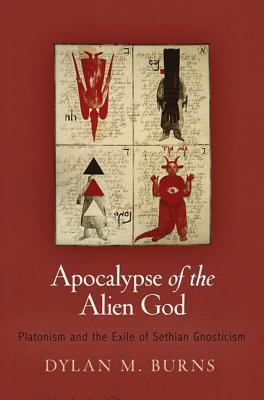


Books in series

Zayd
2014

Saving Shame
Martyrs, Saints, and Other Abject Subjects
2007

Christianity, Empire, and the Making of Religion in Late Antiquity
2008

Fear of God and the Beginning of Wisdom
The School of Nisibis and the Development of Scholastic Culture in Late Antique Mesopotamia
2006

Muhammad Is Not the Father of Any of Your Men
The Making of the Last Prophet
2009

Scripture as Logos
Rabbi Ishmael and the Origins of Midrash
2004

Narrating the Law
A Poetics of Talmudic Legal Stories
2011

Punishment and Freedom
The Rabbinic Construction of Criminal Law
2008

A Common Justice
The Legal Allegiances of Christians and Jews Under Early Islam
2011

Demonic Desires
"Yetzer Hara" and the Problem of Evil in Late Antiquity
2011

Kissing Christians
Ritual and Community in the Late Ancient Church
2005

The Corporeal Imagination
Signifying the Holy in Late Ancient Christianity
2009

Spiritual Taxonomies and Ritual Authority
Platonists, Priests, and Gnostics in the Third Century C.E.
1792

Liturgical Subjects
Christian Ritual, Biblical Narrative, and the Formation of the Self in Byzantium
2014

Conceiving Israel
The Fetus in Rabbinic Narratives
2009

Christ Circumcised
A Study in Early Christian History and Difference
2012

Specters of Paul
Sexual Difference in Early Christian Thought
2011

Aliens and Sojourners
Self as Other in Early Christianity
2009

Slandering the Jew
Sexuality and Difference in Early Christian Texts
2013

The Memory of the Temple and the Making of the Rabbis
2012

Founding the Fathers
Early Church History and Protestant Professors in Nineteenth-Century America
2011

Grammar and Christianity in the Late Roman World
2007

Apocalypse of the Alien God
Platonism and the Exile of Sethian Gnosticism
2014
Authors

Michael Penn is a specialist in the history of early Christianity. He explores how ancient Christian communities forged their own identity, especially in the context of religious and ethnic pluralism. Professor Penn's first book Kissing Christians: Ritual and Community in the Late Ancient Church was published in 2005 by the University of Pennsylvania Press. In 2015 he published two books on Christian-Muslim relations: Envisioning Islam: Syriac Christians in the Early Muslim World (University of Pennsylvania Press) and When Christians First Met Muslims: A Source Book of the Earliest Syriac Writings on Islam (University of California Press). For these projects Professor Penn has received awards from the John Simon Guggenheim Foundation, the American Council for Learned Societies, the National Endowment for the Humanities, the National Humanities Center, the Institute for the Study of the Ancient World, the British Academy, the American Philosophical Association, the American Academy of Religion, and the Wabash Center for Teaching and Learning. Professor Penn is currently working on an Andrew Mellon Foundation funded collaboration with a Smith College computer science professor that uses recent advances in the automated analysis of handwriting to help analyze ancient Aramaic manuscripts. In addition to this work in the digital humanities, Professor Penn has begun several related projects that focus on the history of middle eastern Christianity and the manuscripts they produced. Before joining the Mount Holyoke College Department of Religion in 2002, Professor Penn was a postdoctoral fellow at Brandeis University, and taught religion and Women Studies courses at Haverford College, Bryn Mawr College, and Duke University. He has also been a secondary school teacher, including six years as the director of forensics at Durham Academy High School, where he ran a nationally competitive policy debate team. In addition, he has held research positions at Apple Computers, the Weizmann Institute (Israel), Palo Alto Veterans Hospital, and Ames Research Center, NASA. Professor Penn's class offerings include courses in the Hebrew Scripture and the New Testament and seminars such as "What Didn’t Make It into the Bible," "Sex and the Early Church," and “Early Christian-Muslim Relations.”
A native of Texas, Virginia Burrus received her B.A. (1981) in Classical Civilization from Yale College, and her M.A. (1984) and Ph.D. (1991) in History of Christianity from the Graduate Theological Union in Berkeley, California. Currently the the Bishop W. Earl Ledden Professor of Religion at Syracuse University, she had previously taught in Drew University's Theological School and Graduate Division of Religion. Dr. Burrus' teaching and research interests in the field of ancient Christianity include: gender, sexuality, and the body; martyrdom and asceticism; ancient novels and hagiography; constructions of orthodoxy and heresy; histories of theology and historical theologies. She is past President of the North American Patristics Society, Associate Editor of the Journal of Early Christian Studies, and co-editor of the University of Pennsylvania Press series "Divinations: Rereading Late Ancient Religion."
